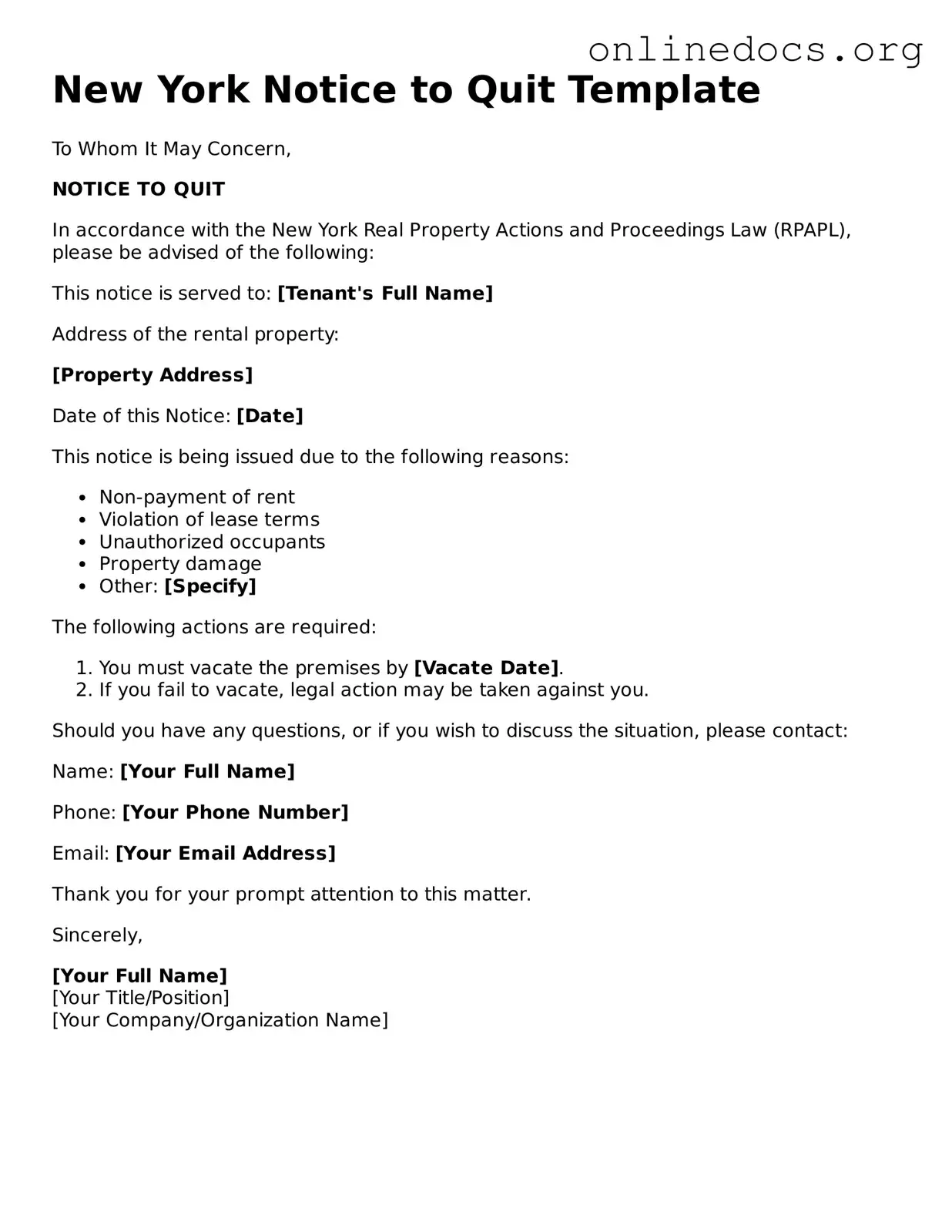Filling out the New York Notice to Quit form can be a daunting task, and many individuals make common mistakes that can lead to complications down the line. One of the most frequent errors is failing to include the correct address of the tenant. This may seem trivial, but an incomplete or incorrect address can render the notice ineffective. It is essential to ensure that the address is precise, as this helps to establish the legitimacy of the notice and ensures that it reaches the intended recipient.
Another mistake often made is neglecting to specify the reason for the eviction. The Notice to Quit should clearly outline the grounds for the eviction, whether it be non-payment of rent, lease violations, or other issues. Without this information, the tenant may not understand the basis for the notice, and this could lead to disputes or delays in the eviction process. Clarity in communication is vital to avoid unnecessary complications.
Additionally, many people forget to sign and date the Notice to Quit. A signature is a crucial element that signifies the sender's intent and commitment to the eviction process. Without a signature, the notice may be deemed invalid, which can prolong the eviction timeline. Always ensure that the document is signed and dated appropriately before serving it to the tenant.
Moreover, individuals often overlook the requirement to provide a copy of the notice to the tenant. It is not enough to merely fill out the form; the tenant must receive a copy of the Notice to Quit. This can be done through personal delivery, certified mail, or other legally recognized methods. Failing to provide the tenant with a copy can lead to claims of improper service, undermining the entire eviction process.
Lastly, many people misunderstand the timeline associated with the Notice to Quit. Each situation may have different legal requirements regarding how much notice must be given before eviction proceedings can begin. Some assume that a standard notice period applies universally, but this is not the case. It is critical to research and understand the specific timelines that apply to the situation at hand to avoid missteps that could delay the eviction process.
